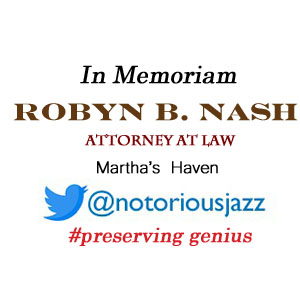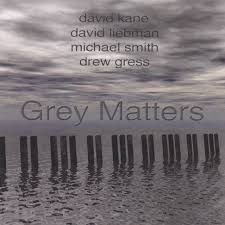
Daily dose Of Jazz…
David Kane was born in Glasgow, Scotland on April 13, 1955 and moved to the United States with his family in 1965. He began playing piano and composing music at the age of eight and went on to attend North Texas State University in 1972. Moving to Washington, D.C. in 1975, he studied with Doctor Asher Zlotnik for five years. In addition, he studied with Ludmila Ulehla, Alan Mandel, and Clare Fischer.
He has performed with Woody Shaw, David Liebman, Marlene VerPlanck, Charlie Byrd, Jim Snidero, Mark Murphy, Eddie Daniels, Dizzy Gillespie, Pam Bricker, Maxine Sullivan, Tom Keenlyside, and Michelle Hendricks. In addition, he has led his jazz quartet featuring drummer Michael S. Smith, saxophonist Glenn Cashman, and bassist Drew Gress.
Kane has accompanied many classical artists including the Twentieth Century Consort, the National Symphony Orchestra, Baltimore Symphony Orchestra, Charlotte Church, Joshua Bell, Renée Fleming, Denyce Graves, and James Galway.
Having composed a variety of chamber works, David is also a prolific composer for film and television for over 30 years with over 250 credits to his name. Most notably, he composed music for the National Geographic Channel, the Smithsonian Channel and for Public Radio International.
From 2006 to 2015, he put on his music critic cap and wrote for Cadence Magazine. In 2021 Jamey Aebersold Jazz published his treatise on improvisation, Playing Outside the Chord. Pianist, composer, arranger, author and music critic David Kane continues to expand his endeavors in music.
More Posts: arranger,bandleader,composer,critic,history,instrumental,jazz,music,piano
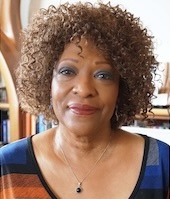
Jazz Poems
CANARY For Michael S. Harper Billie Holiday’s burned voice had as many shadows as lights, a mournful candelabra against a sleek piano, the gardenia her signature under the ruined face. (Now you’re cooking, drummer to bass, magic spoon, magic needle. Take all day if you have to with your mirror and your bracelet of song.) Fact is, the invention of women under seige has been to sharpen love in the service of myth. If you can’t be free, be a mystery. RITA DOVEfrom Jazz Poems ~ Selected and Edited by Kevin Young
More Posts: book,classic,collectible,history,jazz,library,poet
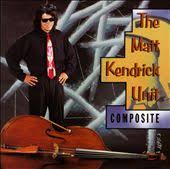
Daily Dose Of Jazz…
Matt Kendrick, was born in Winston-Salem, North Carolina on April 1, 1957 and attended the University of North Carolina School of the Arts. He moved to New York City in 1977 and for four years performed in numerous avant-garde venues. After studying with jazz educator Jerry Coker at the University of Tennessee, and playing in the Knoxville Symphony, he returned home in 1981.
As a composer, he has released to critical acclaim five compact discs, featuring more than forty of his own compositions. He has scored music for three films, leads the Matt Kendrick Unit,and has performed with Marian McPartland, Tierney Sutton, Archie Shepp and Jaki Byard.
He serves on the board of Music Carolina, is the music director for Carolina Music Ways, and is co-artistic director for Music Carolina, a non-profit arts presenting organization. As an educator Kendrick was on the faculty at Wake Forest University for 25 years.
With four decades under his belt, bassist Matt Kendrick continues to compose, perform, and teach.
More Posts: bandleader,bass,composer,history,instrumental,jazz,music
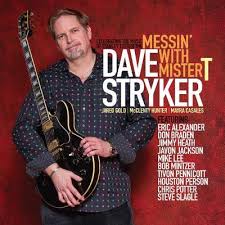
Daily Dose Of Jazz…
Dave Stryker was born March 30, 1957 and grew up in Omaha, Nebraska. At ten years old he was inspired by the Beatles to start playing guitar. His interest was rock and roll until he heard the albums My Favorite Things by John Coltrane and Beyond the Blue Horizon by George Benson. By seventeen, he was a jazz guitarist in town.
In 1978 he moved to Los Angeles, California where he took lessons from another Omaha native, Billy Rogers, and met organist Jack McDuff. After moving to New York City, he toured with McDuff in 1984 and1985, then spent ten years with saxophonist Stanley Turrentine.
Forming a band with Steve Slagle and a trio with Jared Gold and Tony Reedus he went on to work with Kevin Mahogany as sideman, composer, and arranger. Dave appeared with him at Carnegie Hall, and toured with him in Europe and Japan. He has also worked with Eliane Elias, Javon Jackson, and Andy LaVerne.
As an educator he teaches jazz guitar at Indiana University, Montclair State University, at the Jamey Aebersold Summer Jazz Workshop, the Litchfield Jazz Camp, and the Veneto/New School Workshop in Italy.
He recorded 38 albums as a leader, 5 with the Stryker/Slagle band, 2 with Trio Mundo and as a sideman he recorded 34 albums with Jared Gold, Steve Slagle, Allan Botschinsky, Don Braden, Kendall “Keyz” Carter, Rondi Charleston, Royce Campbell, Mike Freeman, Spellbound, Giacomo Gates, Craig Handy, Javon Jackson, Matthew Kaminski, Andy LaVerne, Pete Levin, Kevin Mahogany, Jorge Nila, Tony Reedus, Larry Schneider, Stanley Turrentine, Charenee Wade, and Matthew Whitaker.
Guitarist Dave Stryker, who has been named Top Ten Guitarists and Rising Star by Down Beat magazine, continues to perform and record.
More Posts: guitar,history,instrumental,jazz,music
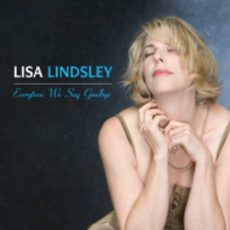
Daily Dose Of Jazz…
Lisa Lindsley was born March 27, 1957 in Ogden, Utah. Growing up she listened to her father’s records of jazz greats like Bill Evans, Dave Brubeck, Ella Fitzgerald and Sarah Vaughan. Her mother, a film actress who had to leave Hollywood in the 1950s because of the McCarthy-era blacklist, imbued in her a love of theater.
While as a young teen attending Wasatch Academy in Mt. Pleasant, Utah Lindsley gravitated to the rock and pop music of the day, she discovered musical theater in high school, a passion that carried through to college. After graduating from the California Institute for the Arts theater program, she spent a decade touring and performing with The Imagination Company. However, raising two daughters put her performing ambitions on hold for years, but she developed a successful career as a voice over artist, cast in national ad campaigns, radio shows and video games.
Comin to jazz singing in mid-life, she earned national attention with her stellar 2010 debut release Everytime We Say Goodbye, featuring bassist Fred Randolph and pianist George Mesterhazy. At the behest of her high school contortionist daughter’s desire to hone her French while studying at the Fratellini Circus School, she moved to Paris, France in 2013. This was the next natural step in her musical evolution. Settling in the 19th arrondissement filled with cultural vitality Lisa quickly developed a network of regular gigs with skilled accompanists. These relationships on her sophomore album, Long After Midnight, with pianist Laurent Marode, drummer Mourad Benhammou, Esaie Cid on flute, clarinet and tenor saxophone, and Bay Area bassist Jeff Chambers.
Back in the States and living in the San Francisco Bay area, Lindsley has been working steadily around the Bay Area over the past decade. She has honed her skills with Roger Letson at Contra Costa College, and studied with Maye Cavallero, Laurie Antonioli and Pamela Rose at the California Jazz Conservatory in Berkeley.
Vocalist Lisa Lindsley, who received essential on the job training from Bay area pianist/drummer Kelly Park, continues her career of performance and recording.
More Posts: bandleader,history,instrumental,jazz,music,vocal


